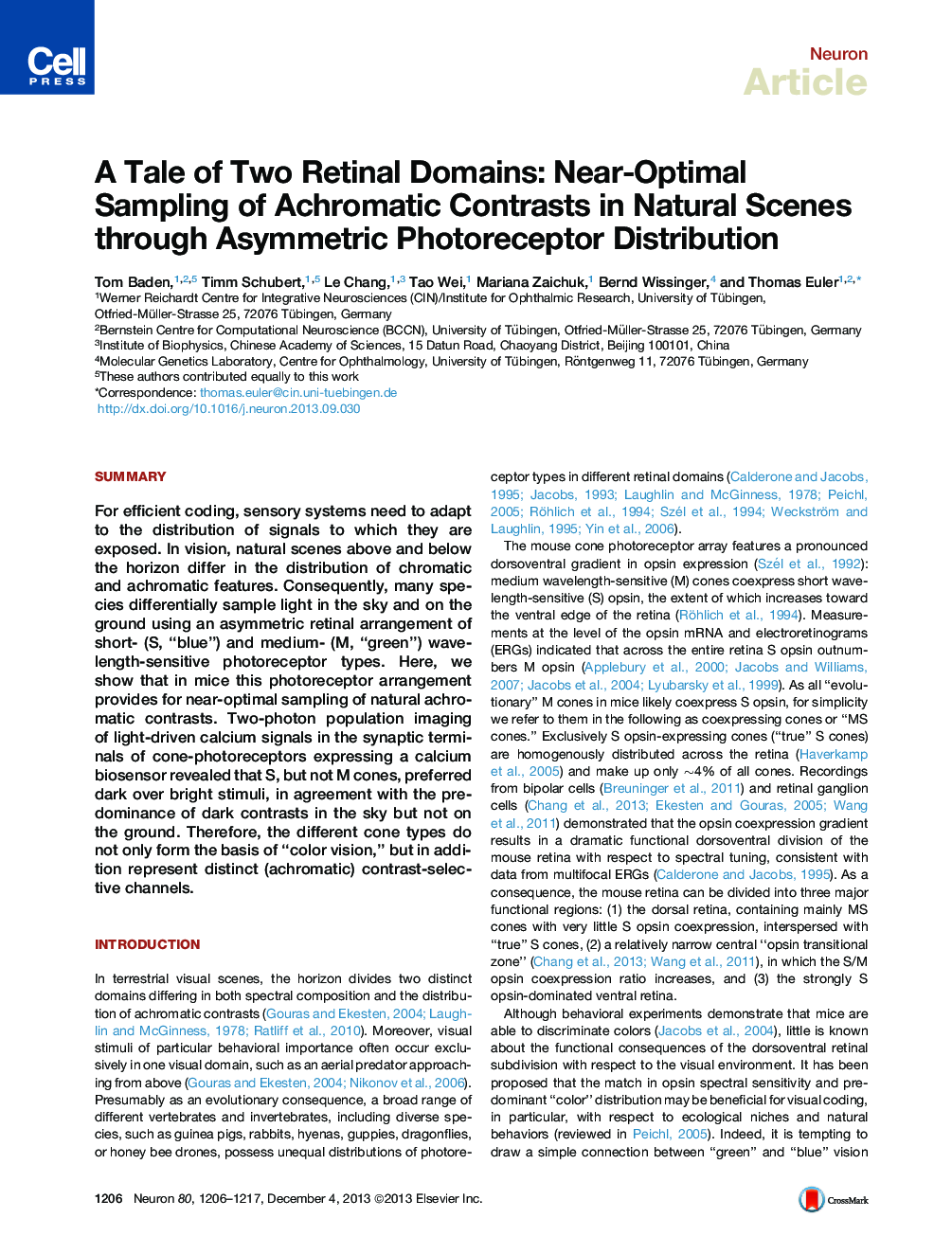| Article ID | Journal | Published Year | Pages | File Type |
|---|---|---|---|---|
| 4321279 | Neuron | 2013 | 12 Pages |
•Mouse retina samples visual scenes above the horizon using >90% functional S cones•Functional S cones preferentially encode dark over light contrasts•Dark bias of functional S cones matches the predominance of dark contrasts in the sky•Ventral S opsin dominance as adaptation to achromatic differences in sky versus ground
SummaryFor efficient coding, sensory systems need to adapt to the distribution of signals to which they are exposed. In vision, natural scenes above and below the horizon differ in the distribution of chromatic and achromatic features. Consequently, many species differentially sample light in the sky and on the ground using an asymmetric retinal arrangement of short- (S, “blue”) and medium- (M, “green”) wavelength-sensitive photoreceptor types. Here, we show that in mice this photoreceptor arrangement provides for near-optimal sampling of natural achromatic contrasts. Two-photon population imaging of light-driven calcium signals in the synaptic terminals of cone-photoreceptors expressing a calcium biosensor revealed that S, but not M cones, preferred dark over bright stimuli, in agreement with the predominance of dark contrasts in the sky but not on the ground. Therefore, the different cone types do not only form the basis of “color vision,” but in addition represent distinct (achromatic) contrast-selective channels.
